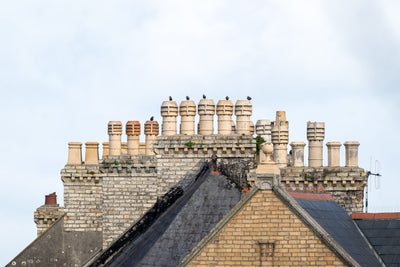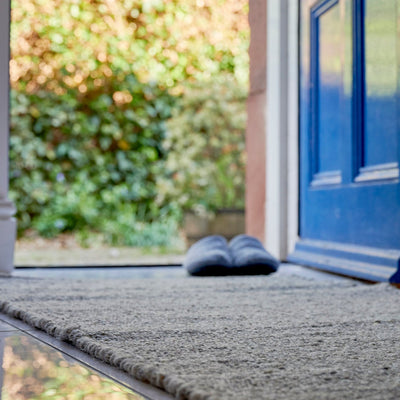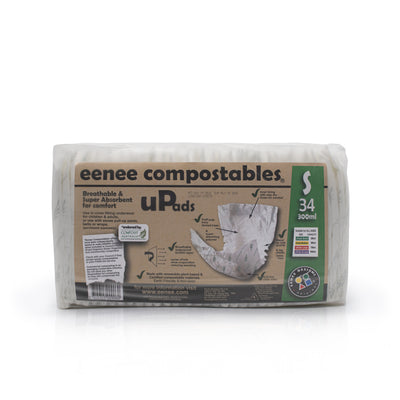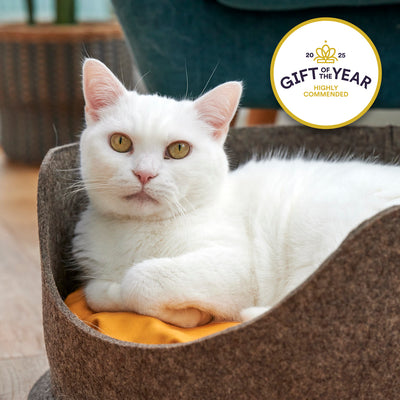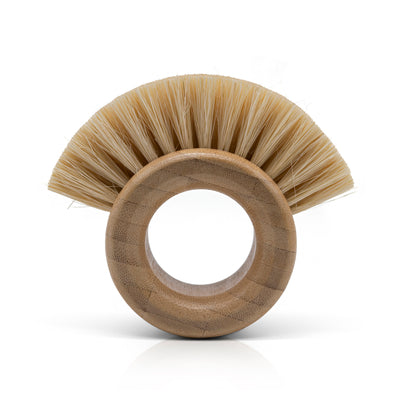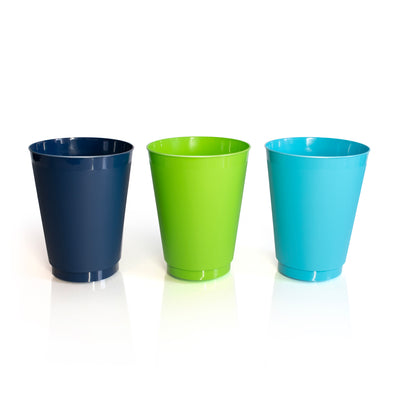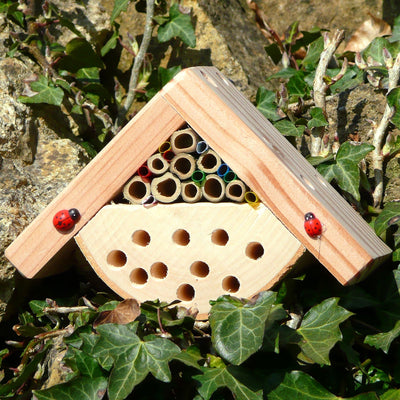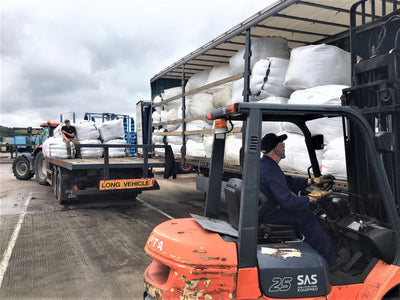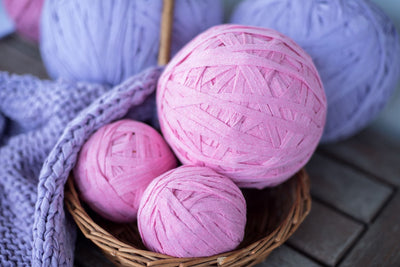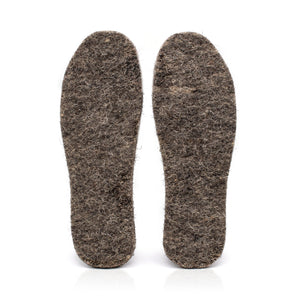Hanging baskets are just the perfect way to showcase your favourite plant or flower. Inside or outside they can be hung from any fixing, fence or wall – perfect for day to day admiring. But, it can be surprisingly tricky to curate a hanging basket that’s entirely peat free, all too often we find peat hidden everywhere. So, we’ve come up with a handy guide on how to build a hanging basket that’s peat-free.
Gather your equipment:
Hanging basket:

There are a couple of things you need to take into account before building the perfect peat-free hanging basket. Firstly, you’ll need a basket! We always recommend using tough metal hanging baskets, they’re plastic free, robust and can be used year after year without issue. Make sure you choose a hanging basket size that’s big enough for your plant, but also fits the area you’re wishing to display it in. If you’re stuck on sizes, a larger basket allows your plants ample room for their roots to spread and for them to grow easily.
Next, you’ll need a liner. Preferably a plastic free, compostable, natural liner such as our eco-friendly jute hanging basket liners. You’ll need to ensure you get the correct size liner for the basket that you’ve got – that way you’ll get a snug fit all the way around the planter.
Compost:

Next, you’ll need compost. Peat-free of course! Your planting plans will dictate what type of peat-free compost is best as there’s a variety to choose from.
If you’ve decided to sow seeds into your basket, rather than place a plant you’re probably best with a finer, nutrient dense peat-free wool compost for seeds.
If you’re planning to use a plant which has high nitrate requirements, has a lot of growing to do, or bears fruit we’d recommend wool compost over anything else. Wool compost is nitrate rich and very nutrient dense – perfect for higher-need plants.
Planning something small? A hanging pot or seedling. Why not take a look at Cocopeat? These handy little blocks are perfect for smaller hanging pots or hanging seedlings, they’re easy to use and the perfect potting medium for smaller projects.
For general purpose use – just go for your average peat-free potting compost. It’s usually made from composted bark, leaves coir and plants. Generally it provides enough all round nutrients for most plants you might use for a hanging basket.
Plant:

Finally you’ll need to get your plant. You need to be careful here. Most plants that come from gardening centers are planted and contained within compost which almost always contains peat! Recently we’ve noted that some businesses have taken the leap to remove peat from their seedlings and plants, but these are few and far between.
Choose your plant, or selection of plants according to the size of hanging basket you’ve got available, the area in which you’re going to hang your peat-free hanging basket, as well as your own preferences!
Here at Chimney Sheep we’ve got a whole host of natural gardening products to help fulfill your every gardening need. In fact we’ve got everything you might need to build the perfect peat-free hanging basket (minus the plants)! Why not take a quick peek?
Shop Natural Gardening Products
How to build a peat-free hanging basket:
Now you just need to put everything together:

- Firstly, get your metal hanging basket and carefully fit your natural jute liner. Make sure you’ve got the right size liner for your basket and that it lines the entire planter snugly.
- Next, fill your peat-free hanging basket with your chosen peat free compost. Take care not to pack the compost too tightly, but ensure the basket is comfortably full. You might want to consider dispersing some organic sheep’s wool pellets in among the compost to help with water retention!
- Using a small trowel dig a hole in the centre of your peat-free hanging planter. Ensure it’s easily big enough for the plants root ball. Place your plant carefully into the hole and firm into place. You may wish to cover the base with a little more compost, taking care not to cover the leaves.
- If you’re placing multiple plants, you’ll need to dig multiple holes and ensure the plants are spaced evenly.
- We’d recommend finishing your peat-free hanging basket off with a jute mulch mat – perfect for protecting your plants roots, helping it retain water and stopping pesky weeds.
- Find the perfect spot and hang your basket somewhere everyone can admire it!
Peat-Free hanging basket ideas:
In case you need any more inspiration we’ve come up with some of our favourite plant combinations you can use to build beautiful hanging baskets year round.
Spring planters:
Why not be inspired by spring and plant some pretty pastel flowers? Think snowdrops, primroses and crocuses for a lovely pop of colour.
Summer hanging fruits:
Why are hanging baskets always filled with flowers, did you know you can plant fruits too? Why not build a beautiful strawberry hanging basket that fruits throughout summer? Or plant a fantastic little raspberry bush. Not only do they look delightful, they’ll fruit aplenty too.
Autumn hanging pots:
Not all plants flower through summer. Why not take advantage of the changing seasons and plant some wonderful chrysanthemums or asters? They’ll keep their colour bright right through the autumn months providing you with a pop of colour even as the weather begins to turn.
Beautiful winter baskets:
The weather’s cold and dreary and the nights are closing in. What better to cheer you up than a hanging basket that’s still flowering throughout the colder months. Plant winter honeysuckle or winter aconites to ensure you get a little flowery brightness year round.

